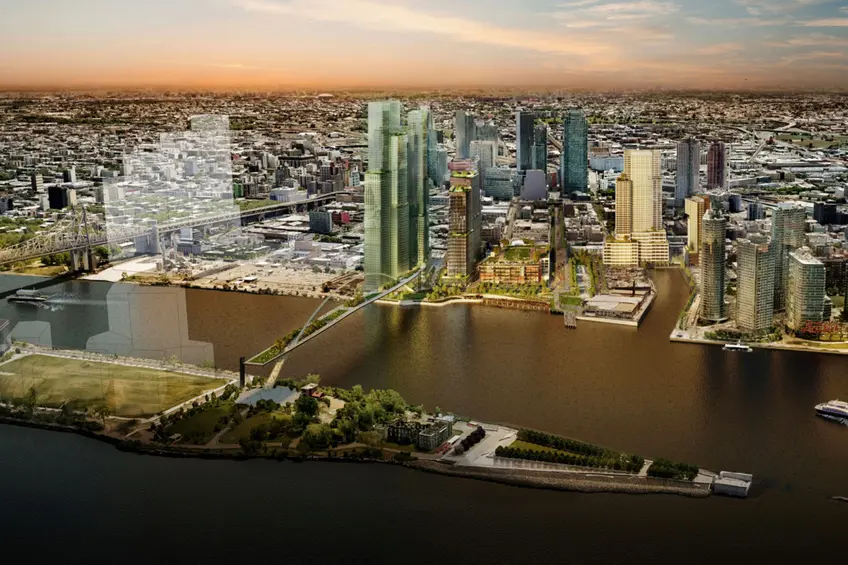 Rendering of Long Island City's new green energy hub via SHoP Architects
Rendering of Long Island City's new green energy hub via SHoP Architects
After the events of the past year and the resulting economic fallout, the importance of affordable housing is impossible to ignore in New York City. There is no shortage of ideas to address it: In an op-ed for AM New York, Brooklyn Borough President and mayoral candidate Eric Adams calls for the expansion of Local Law 49, which created a pilot program in East New York to convert basements into safe, legal, and affordable dwellings. A new report from the Manhattan Institute recommends a five-point agenda that includes modernizing zoning regulations, directing city subsidies for affordable housing to where they are needed the most, and placing greater emphasis on moderate- to middle-income households.
In the meantime, city developers and designers have been hard at work on creating the housing and city they wish to see in the post-pandemic world. We take a look at new renderings below.
In the meantime, city developers and designers have been hard at work on creating the housing and city they wish to see in the post-pandemic world. We take a look at new renderings below.
In this article:
River Green Power, Long Island City
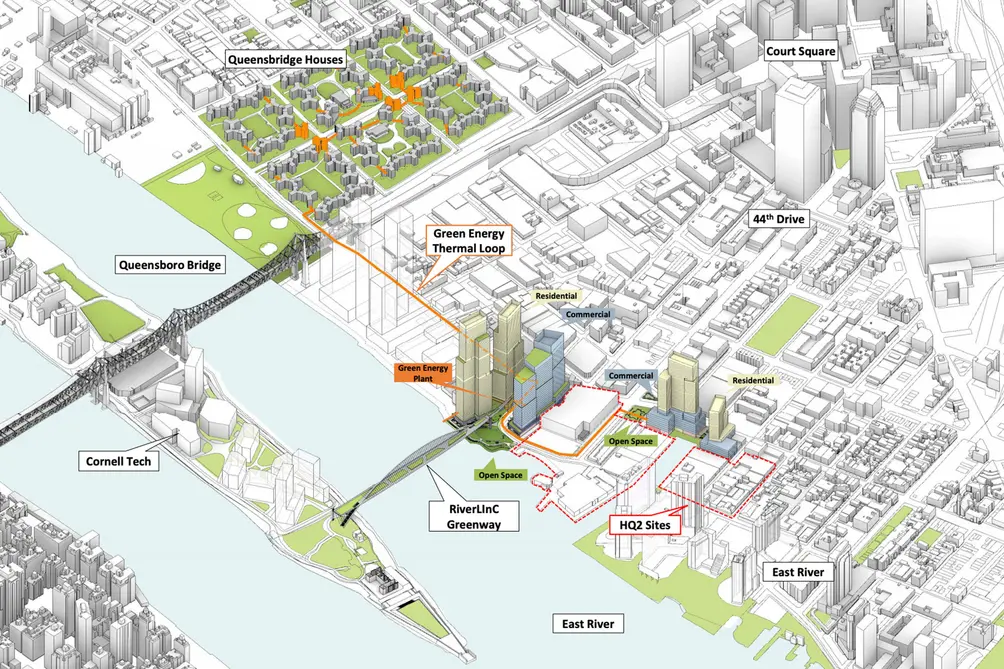
Some in Long Island City are still smarting over the loss of the new Amazon headquarters, but something more environmentally friendly could be in store for the area: Bruce Teitelbaum, general partner of RiverLinC, is in preliminary discussions with city and state officials about building a green power plant on the six-acre site right next to the Anable Basin mega-development (see above). River Green Power, as the project has been dubbed, would generate energy from river water, solar, and geothermal sources, and could connect to Queensbridge Houses so as to provide energy to the largest public housing complex in the country.
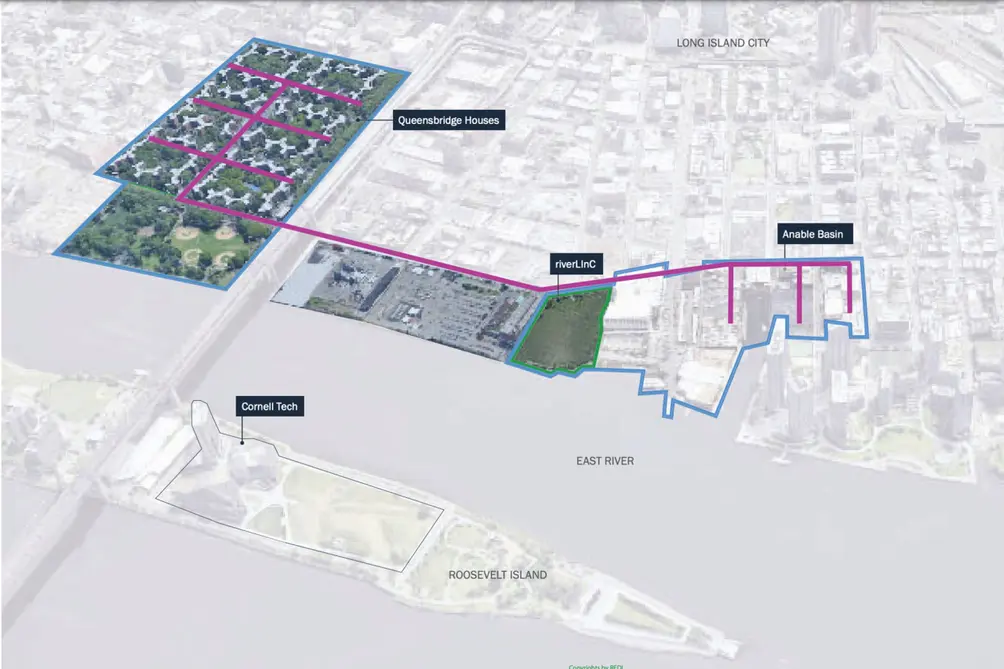
The New York Post points out that River Green Power has the benefit of not requiring zoning changes or ULURP. However, its plan to use river water to power Queensbridge Houses, a NYCHA complex, require approvals from City Hall and the state’s Department of Environmental Conservation. It already has the backing of the Queens Chamber of Commerce.
River Green Power is expected to cost $250 million, but Mr. Teitelbaum isn’t concerned about financing. Both the New York State Power Authority and the NYS Energy and Research Development Authority provide grants to companies that open clean energy plants, and his firm plans to apply for them. Additionally, President Biden’s proposed infrastructure program could mean more federal funds for clean energy projects.
River Green Power is expected to cost $250 million, but Mr. Teitelbaum isn’t concerned about financing. Both the New York State Power Authority and the NYS Energy and Research Development Authority provide grants to companies that open clean energy plants, and his firm plans to apply for them. Additionally, President Biden’s proposed infrastructure program could mean more federal funds for clean energy projects.
 Renderings of River Green Power via SHoP Architects
Renderings of River Green Power via SHoP Architects
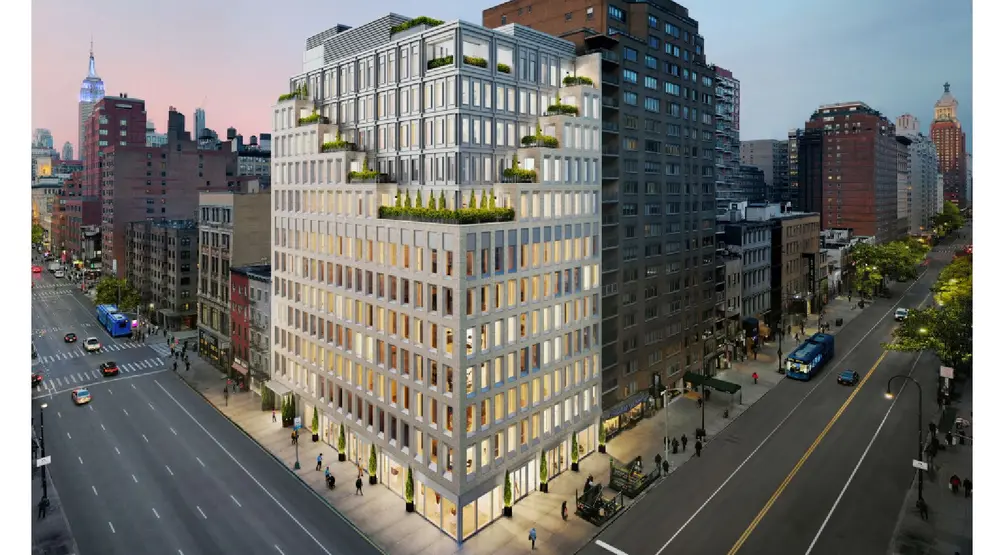 Renderings via BRDAR
Renderings via BRDAR
As Forena has taken shape on the corner of West 14th Street and Sixth Avenue, drawings submitted to the NYC Department of Buildings gave a general idea of what the 12-story building was expected to look like. However, recently revealed renderings show a striking yet sensitive design by Morris Adjmi Architects. Sloping metal frames form a modern crown, and the building features masonry detailing and cascading setback terraces. The setbacks will allow many of the 50 homes within to enjoy private terraces, and all units will feature open layouts, floor-to-ceiling windows, and high-quality materials. Amenities will include a landscaped Zen courtyard, a modern fitness center, multiple lounge areas, and a rooftop kitchen and dining area.
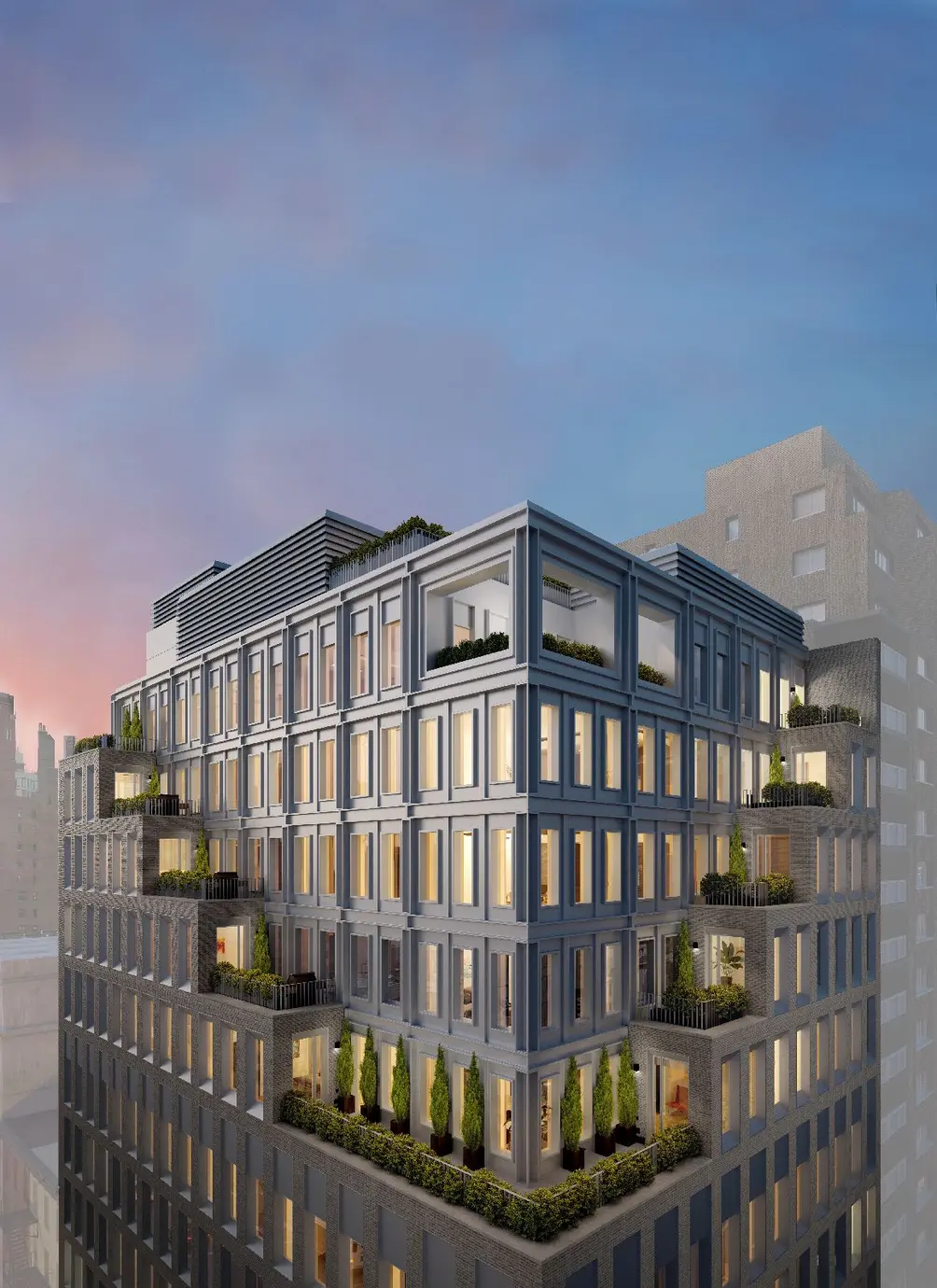
Liberty Towers, Staten Island
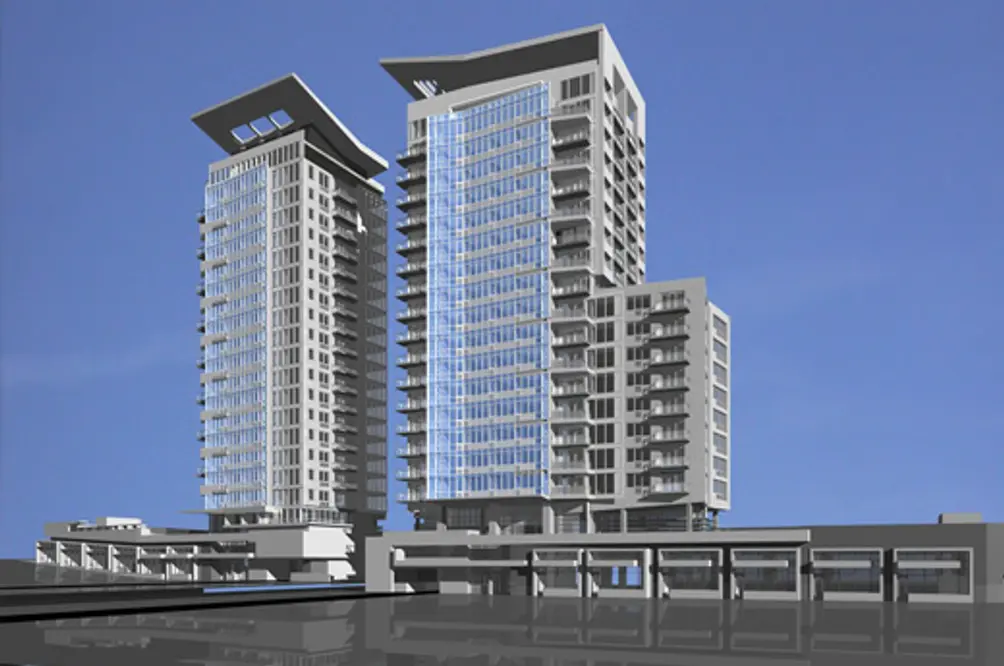 Rendering of Liberty Towers via OSD Engineering
Rendering of Liberty Towers via OSD Engineering
We have not often thought of Staten Island where high-rises are concerned in recent years, but Madison Realty Capital may be about to change that: The developer owns a two-acre site at 170-208 Richmond Terrace and 8-26 Stuyvesant Place, and three apartment buildings ranging from 12 to 26 stories high have been proposed for the site. Of the 750 units throughout the project, 225 would be earmarked as affordable housing.
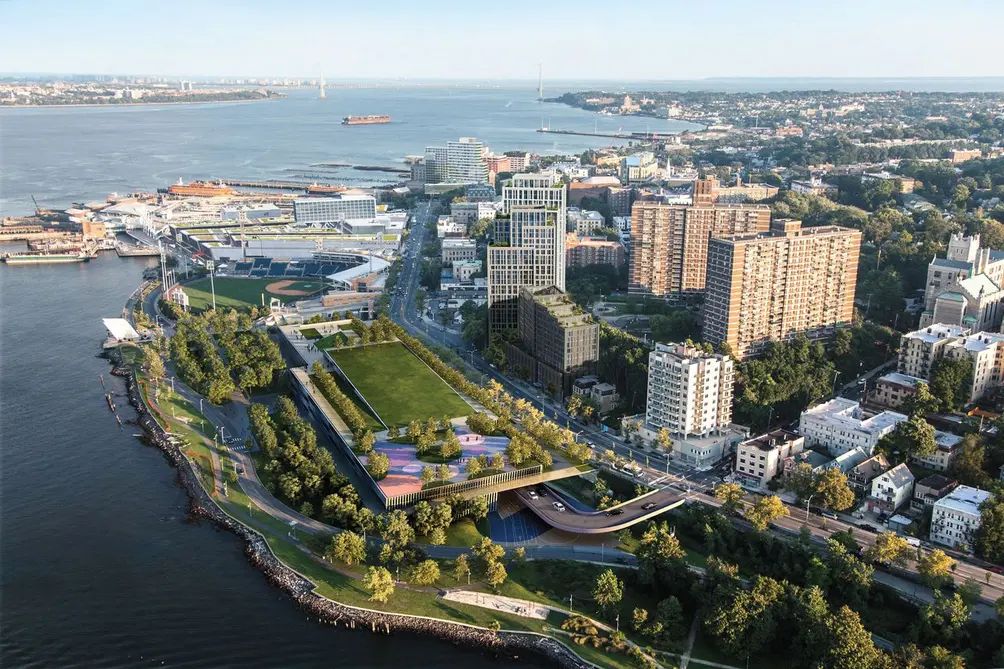
Before the project could go forward, it would have to go through ULURP and achieve a rezoning that would allow for apartment buildings of greater height than currently allowed in both the Special Hillsides Preservation District and the Special St. George District, where the site is located. It has already run into resistance from local officials who have expressed concerns about the size of the project. If all goes according to plan, completion is estimated for 2025.
Hospital for Special Surgery, Lenox Hill
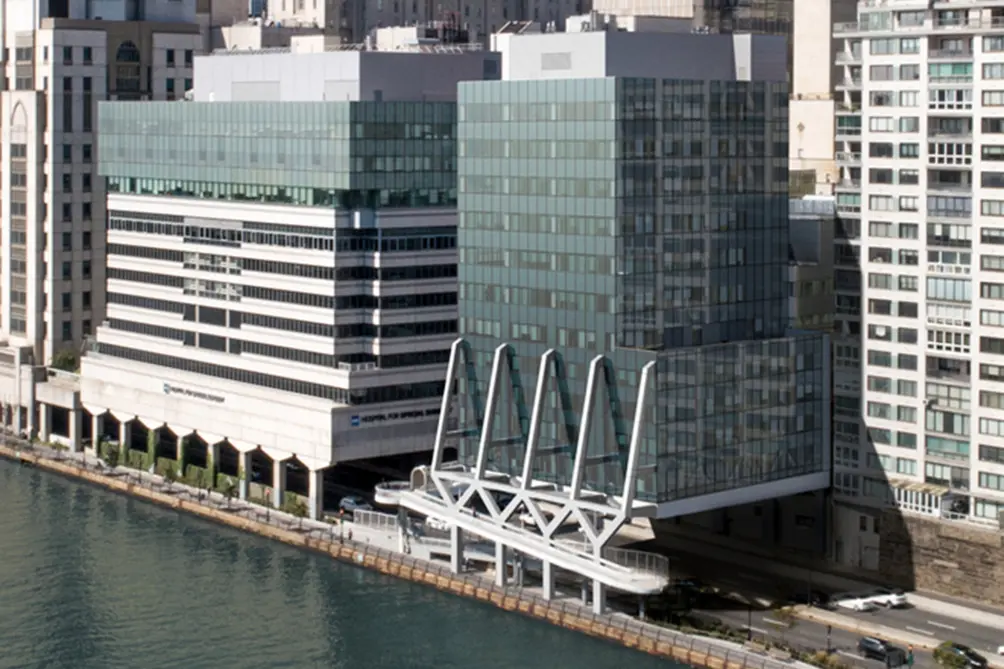 Rendering via Hospital for Special Surgery
Rendering via Hospital for Special Surgery
The Hospital for Special Surgery has been caring for New Yorkers since 1863, and an expansion is set to take it into the 21st century: As part of a $300 million modernization of the campus, a new 12-story tower is set to break ground in October. While it won’t add any new beds, the New York Post points out that its 100,000 square feet will offer plenty of room to reconfigure operating rooms, doctors’ offices, and clinical and research facilities. The new tower will connect to the main hospital with a third-floor skybridge at East 71st Street, and construction is expected to take about two and a half years.
Plans for the expansion were approved in the 1990s, and the hospital has all the necessary permits to proceed. While it is not expected to block views, the pedestrian crossbridge linking East 71st Street to the East River esplanade will have to be removed; the hospital has promised to replace and improve it after construction is complete.
The new tower is taking shape with the help of a $35 million gift from the Anna-Maria and Stephen Kellen Foundation. It was given at the recommendation of foundation vice president Marina Kellen French, daughter of the foundation’s namesakes, who said of the expansion, “It’s not just about bricks and mortar, but about people and New York City.”
The new tower is taking shape with the help of a $35 million gift from the Anna-Maria and Stephen Kellen Foundation. It was given at the recommendation of foundation vice president Marina Kellen French, daughter of the foundation’s namesakes, who said of the expansion, “It’s not just about bricks and mortar, but about people and New York City.”
26-25 4th Street, Long Island City
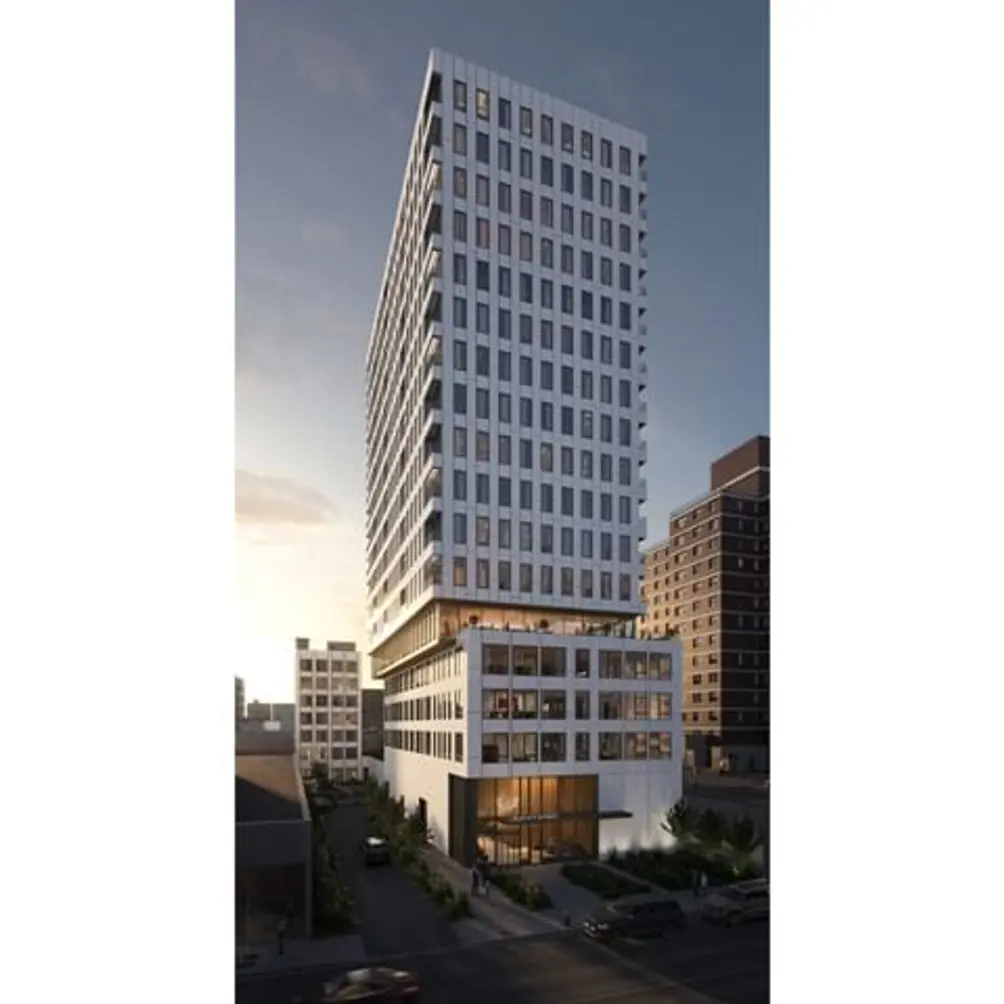 Rendering of 26-25 4th Street via JFA
Rendering of 26-25 4th Street via JFA
Outdoor space has emerged as a must-have amenity during the coronavirus pandemic, and JFA is set to incorporate that into their new design for Key Developers: Renderings for an 18-story, 165-unit residential building have been revealed on the firm’s Instagram page and show a tower that shifts at the fifth floor to create a large shared terrace. The rendering also depicts apartment balconies further up in the tower.
In addition to the common terrace, amenities are expected to include a lounge, gym, business center, children’s playroom, rooftop terraces, and on-site parking. The project is currently awaiting Department of Buildings approval.
In addition to the common terrace, amenities are expected to include a lounge, gym, business center, children’s playroom, rooftop terraces, and on-site parking. The project is currently awaiting Department of Buildings approval.
Would you like to tour any of these properties?
Just complete the info below.
Or call us at (212) 755-5544
Life House Hotel, Bushwick
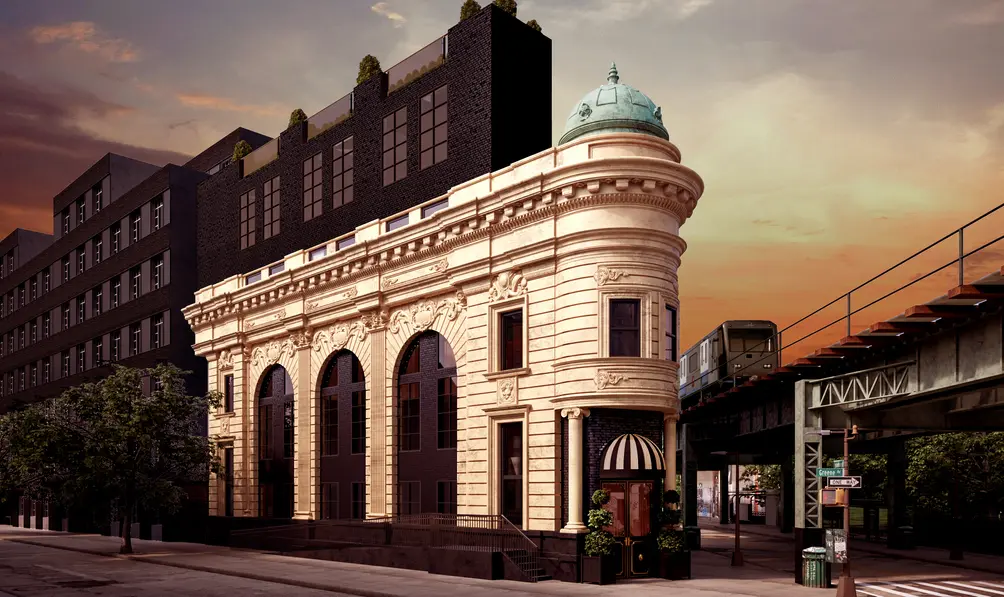 All renderings via Life House
All renderings via Life House
Across the country, Life House has sought to bring locally rooted flavors, experiences, and ambiance to its hotels. For its first New York outpost, it renovated and converted a Beaux-Arts vaudeville theatre into a boutique hotel in Bushwick. The rooms will feature custom parquet floors, velvet hues, and brass hardware. Amenities are to include a dining room and roof terrace, and opening is anticipated for fall 2021.
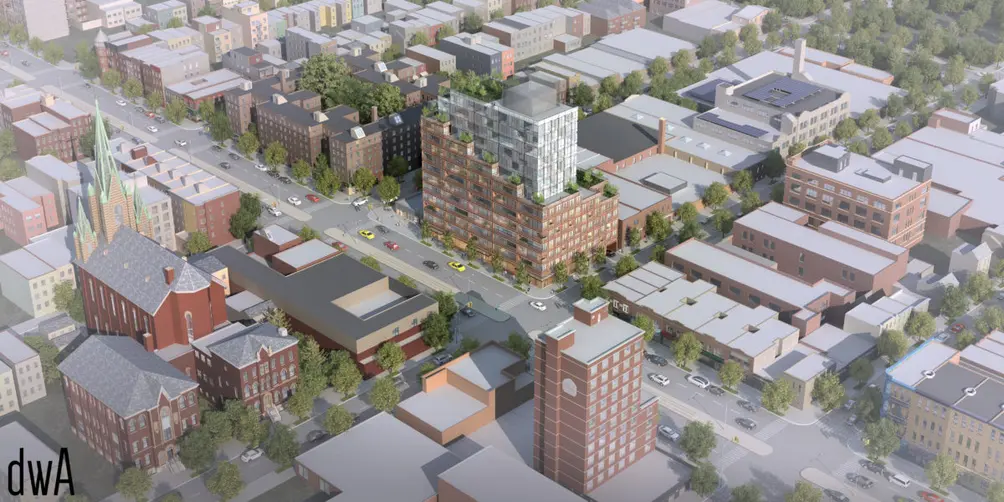 Rendering of 737 4th Avenue via Totem
Rendering of 737 4th Avenue via Totem
In November 2020, Brooklyn’s Community Board 7 voted to approve a rezoning that would allow a 14-story residential building to rise at 737 Fourth Avenue, which is currently the site of a Dunkin Donuts-Baskin-Robbins drive-through. The project is helmed by Totem and will contain 135 new housing units, 35 of which have been earmarked as affordable for those earning 30 to 60 percent of the Area Median Income.
Some members of the community have demanded that the project be fully affordable; on the other hand, the Brooklyn Eagle recently ran an editorial from a longtime resident who extolled the project’s ability to put people to work and bring new housing, both affordable and market-rate, to the area. Either way, the project is taking shape amidst a severe housing shortage: Only 949 new units have been built in Sunset Park since 2014, and only 102 of those have been affordable. This is not nearly enough to accommodate the influx of residents who came to the neighborhood seeking more reasonable rents in recent years.
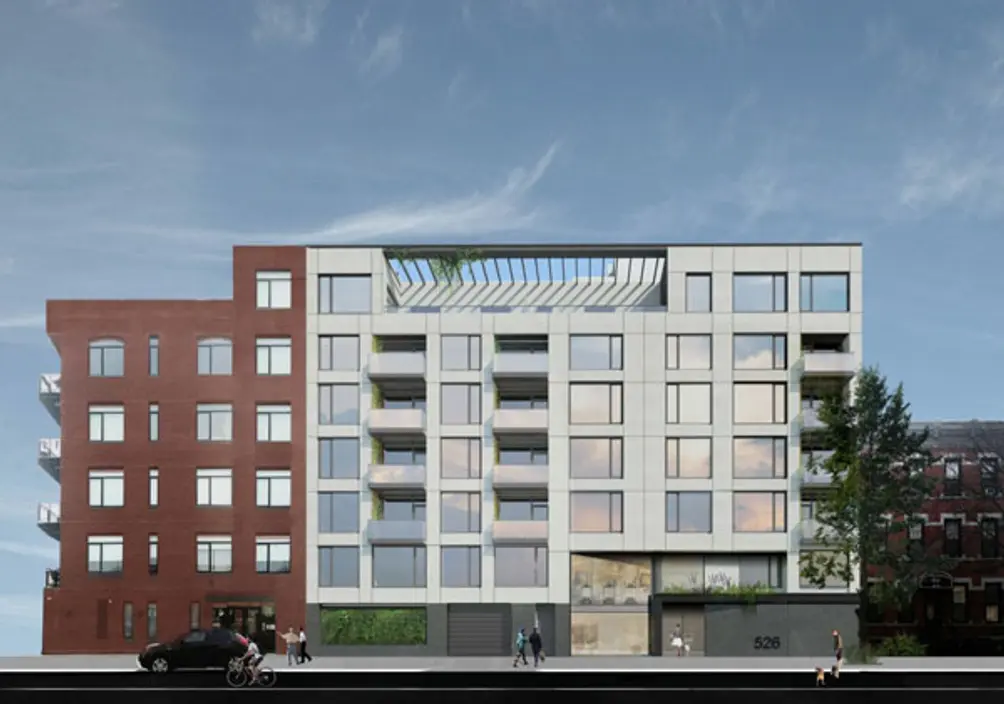 Rendering of 526 Union Avenue via Northside Capital Corporation
Rendering of 526 Union Avenue via Northside Capital Corporation
In the heart of Williamsburg, a seven-story building is rising on a vacant lot four blocks from the Metropolitan Avenue L and G subway station. Northside Capital Corporation is at the helm, and renderings of a design by Kutnicki Bernstein Architects show oversized windows and private terraces at select units.
According to permits, amenities will include storage, a package room, a roof terrace, 42 bike parking spaces, and 23 parking spaces. An offering plan filed at the beginning of March 2021 does not list a sellout price, but CityRealty data shows an average condo price of $1,197 per square foot for Williamsburg.
According to permits, amenities will include storage, a package room, a roof terrace, 42 bike parking spaces, and 23 parking spaces. An offering plan filed at the beginning of March 2021 does not list a sellout price, but CityRealty data shows an average condo price of $1,197 per square foot for Williamsburg.
Halletts North, Astoria
Yesterday, the Department of City Planning held a virtual public scoping meeting regarding Halletts North, a 1 million-square-foot complex planned for a 3.8-acre site at 3-15 26th Avenue. It was previously used by Astoria Steel; following an extensive remediation, developer Astoria Owners LLC seeks to build three towers ranging from 22 to 35 stories high.
The project is being designed by Studio V Architecture and Ken Smith Workshop and is located just one block from The Durst Organization’s massive Halletts Point development. It calls for 1,400 new housing units, more than 300 of which would be designated affordable housing. In addition to the residential component, Astoria Post reports that the project is expected to feature 3,600 square feet of retail space, a 9,700-square-foot community facility, a 525-car parking garage, and a new public waterfront promenade.
The developers are seeking several zoning changes for the project, which is expected to undergo ULURP later this year. If everything is approved, construction could start in the second half of 2022. An estimated completion date has not been provided.
The developers are seeking several zoning changes for the project, which is expected to undergo ULURP later this year. If everything is approved, construction could start in the second half of 2022. An estimated completion date has not been provided.
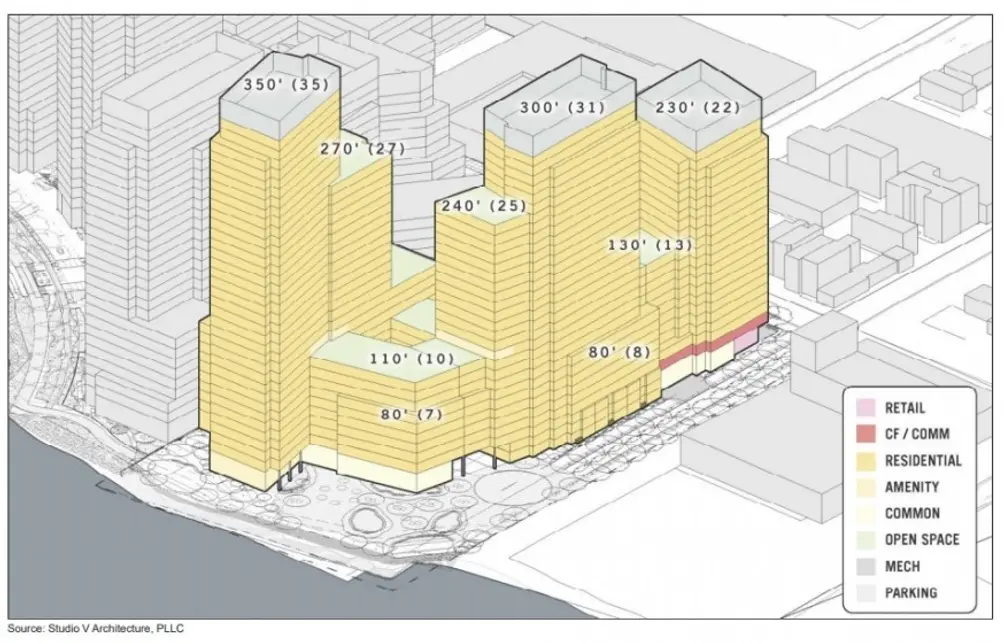
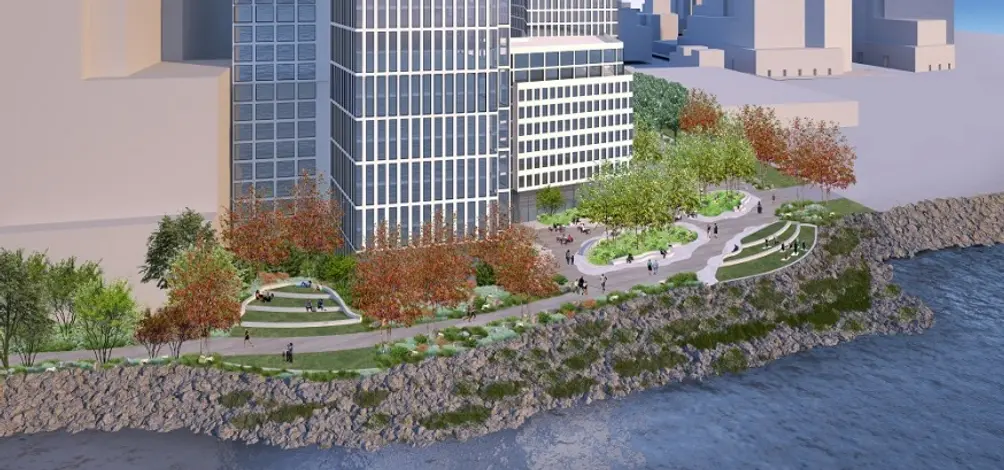 Renderings of Halletts North via Astoria Owners LLC
Renderings of Halletts North via Astoria Owners LLC
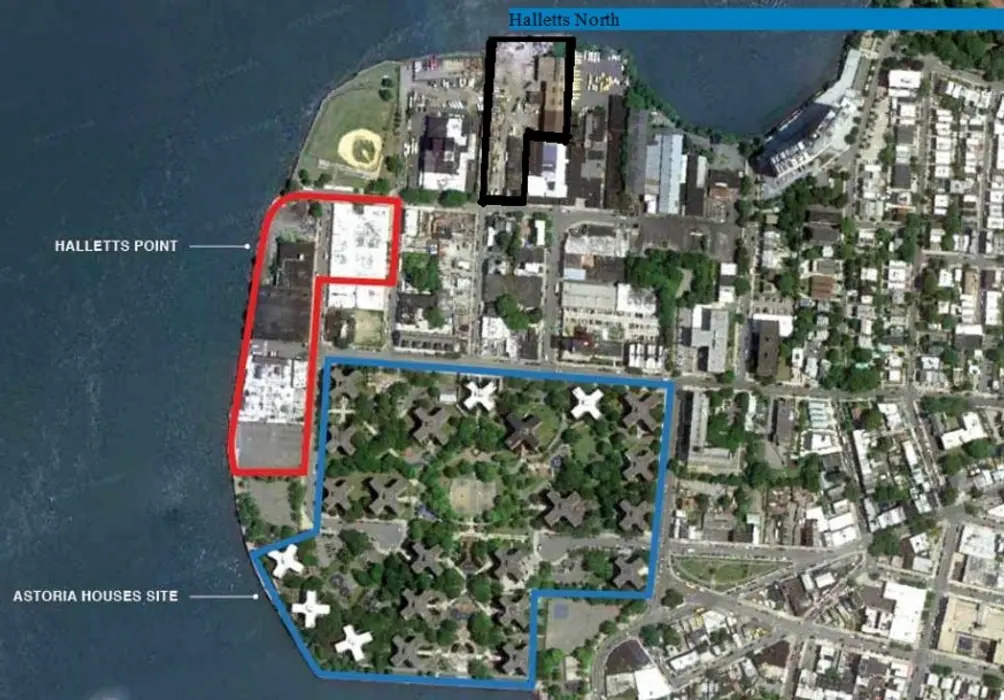
Marymount School Expansion, Carnegie Hill
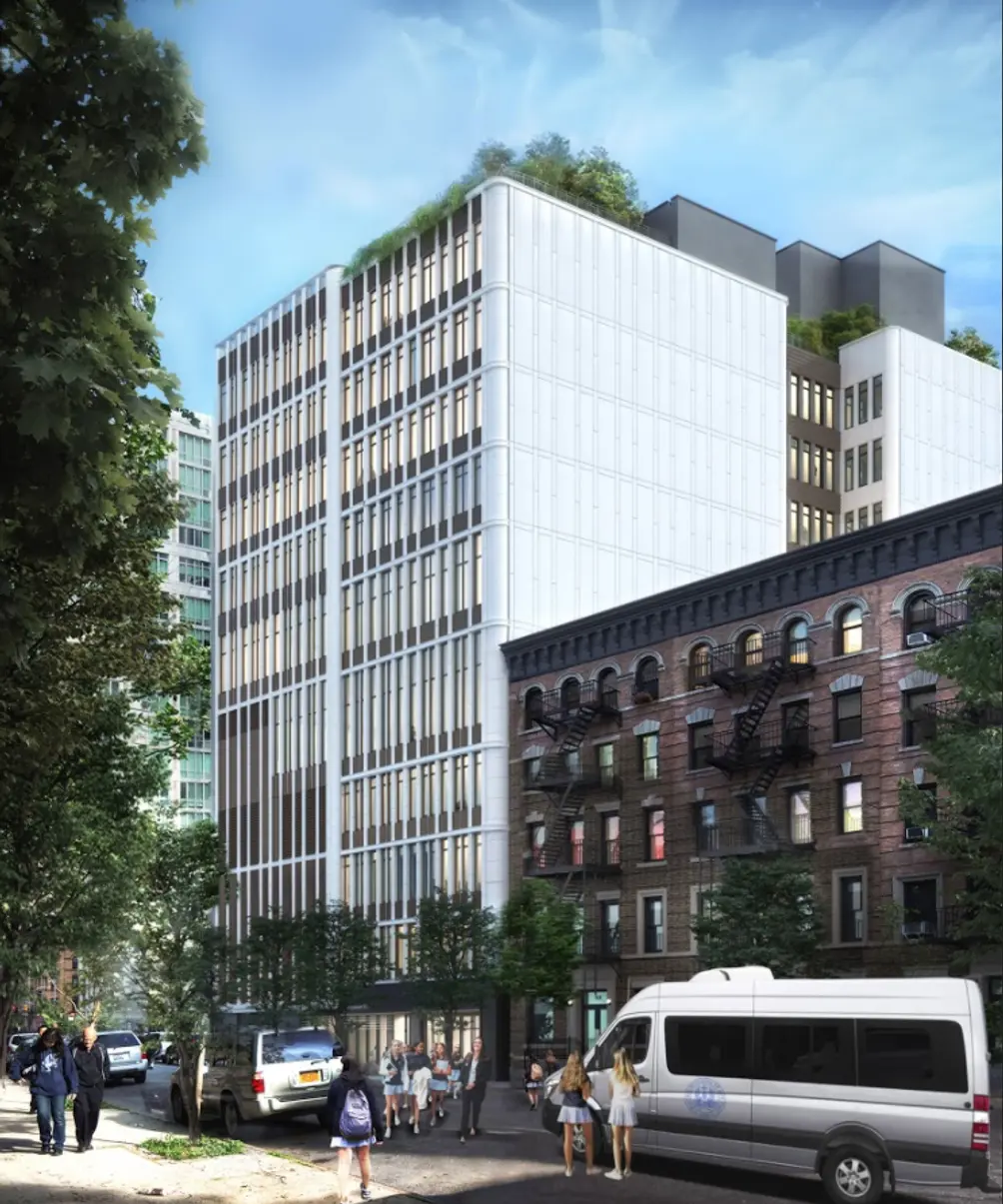 All renderings via COOKFOX
All renderings via COOKFOX
Over the past several years, Marymount School of New York has adapted the Beaux Arts mansions and additional facilities on its longtime Fifth Avenue campus to accommodate a growing student body and flourishing academic and extracurricular programs. The school recognizes that this is not a long-term solution, though, and is hard at work on a permanent second home at 115 East 97th Street.
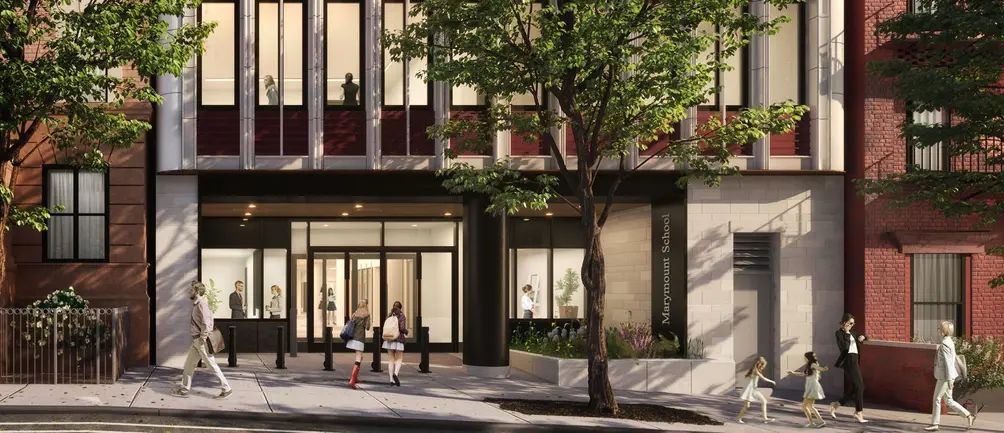
The new building will feature innovative new learning spaces, a chapel, a large dining area, a fitness and wellness center, a theater, and outdoor spaces. The design by COOKFOX Architects pays homage to the school’s flagship campus while making the most of space and light. The project was deemed essential construction at the height of the coronavirus pandemic, and is expected to be ready in time for the 2022-2023 school year.
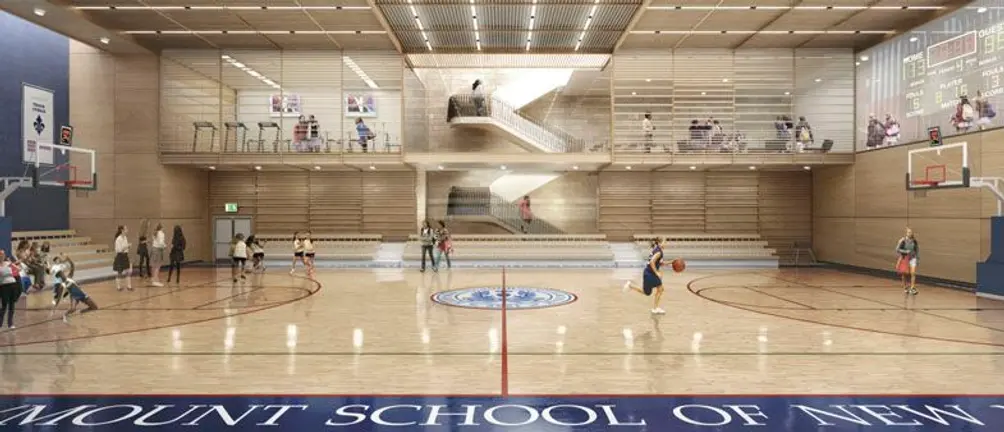
Would you like to tour any of these properties?
Just complete the info below.
Or call us at (212) 755-5544
Would you like to tour any of these properties?


 6sqft delivers the latest on real estate, architecture, and design, straight from New York City.
6sqft delivers the latest on real estate, architecture, and design, straight from New York City.
